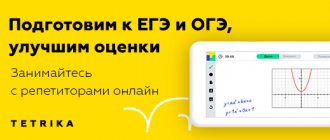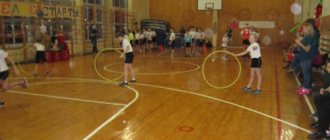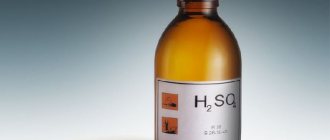Interesting problems in chemistry material on chemistry (grade 8) on the topic
Fun chemistry problems
Mass fraction of substance
Chemistry is an exact and specific science. Many children do not immediately understand and accept this. Therefore, it would be nice to introduce elements of humanization into exact disciplines. After all, not everyone will become a chemist. Each of us understands this. But graduating from school a person with certain values, for whom kindness is not alien, would be the dignity of every school. The more personal values a person encounters in life, the more he adopts them.
There are many places in chemistry where you can turn a student’s gaze to the human qualities of a person, moments of kindness and humor, and humanity. One of them is tasks. With their help, you can clearly show where and how knowledge of the subject is applied, and casually draw attention to moments in our lives that often go unnoticed. G. Oster noticed this long ago, and we have the opportunity to use his problems in physics and mathematics. Such tasks teach you to focus on what is necessary, to take into account side and instructive facts.
I made an attempt to compose several similar problems in chemistry on the topic “Mass fraction of a substance.” Even if the conditions of the problems are somewhat lengthy, they bring some relaxation to the lesson, remove the severity and stinginess of the conditions that characterize the problem books, and the lesson becomes more relaxed, since the students behave more directly.
Problem conditions
Task 1. Determine the mass of a phosphoric acid solution spilled on himself by a careless laboratory assistant, if the acid in the solution was 4 g and its mass fraction was 0.001.
Task 2. Misha was an avid experimenter from the cradle. One day he decided to obtain iodine crystals from a 5% alcohol solution of iodine by evaporating the alcohol. He poured 25 g of solution from the bottle into the evaporation cup and began the evaporation process.
Explain why at the end of the work Misha’s eyes widened and he had a perplexed face. How many grams of iodine could Misha theoretically receive?
Task 3. Having become acquainted with ways to express the concentration of solutions in chemistry lessons, Olya decided for herself that she would become a pharmacist. For her home first aid kit, she decided to prepare a 3% hydrogen peroxide solution herself. Having rinsed a bottle of alcohol with distilled water and thrown in four tablets of hydropyrite (each 0.75 g), she measured out 97 ml of the same water, poured it into the bottle and screwed the cap tightly.
Do you think Olya has come up with a medical remedy?
Task 4. The student completes the test task. He needs to prepare 100 g of table salt solution with a mass fraction of 7%. He weighs 7 g of salt, measures out 100 g of water and places it all in a glass. He stirs with a stick and sees the teacher’s prickly eyes with pursed lips. The student immediately understood everything.
What did the student understand?
Problem 5. Alena has been raising the tabby cat Sailor for a whole year. The sailor is partial to the smell of Carnation cologne, which the girl uses to repel mosquitoes. Left alone at home, he lay in a ball on the sofa until lunch, then stretched, arched and walked importantly to the dressing table, rubbed his mustache on the lid of the bottle and lightly hit the glass with his paw. Having rolled the bottle on the floor with a roar, the cat began to gnaw on the cap. At the first drops of liquid, the Sailor sneezed loudly, then sniffed it and began to lick it.
Entering the house, Alena rushed into the hall. There were still 20 g of contents left in the bottle (that's half of what there was), and the cat was lying on the floor like a big white bun, with its paws outstretched and continuing to lick the floor.
How many grams of alcohol did the cat lick from the floor if its share in the cologne is 96% (neglect evaporation)?
Problem 6. A technician dropped a vessel containing 700 g of sodium hydroxide solution with a mass fraction of NaOH 10% from the cabinet.
How many grams of water and alkali did the laboratory technician take to prepare a new solution of the same type?
Problem 7. Vitaly has low stomach acidity. The doctor recommended that he wash down his food with a 3% solution of hydrochloric acid. Vitaly drinks 10 g of this solution per day. In order not to go to the pharmacy often, Vitaly suggested that his mother buy the product immediately for the whole year. The mother looked at her son and invited him to think first and then implement this decision himself.
Why did mom behave this way? Find the amount of acid Vitaly drank in a year.
Task 8. The school caretaker turned to the school’s chemistry club for help. Having given the circle members 500 g of a 25% solution of technical ammonia (ammonia), he set the task ahead: to provide each of the 30 classrooms of the school with a bottle for a first aid kit, which would contain 20 g of ammonia solution with its mass fraction of 10%.
Will the circle members cope with the task?
Problem 9. A thermometer was broken in the laboratory, and mercury rolled across the floor. It was collected in a vessel, which was sealed. The chemistry teacher gave strict instructions to the laboratory assistant to demercurize the room with a solution of potassium permanganate acidified with hydrochloric acid with a mass fraction of potassium permanganate of 10%.
Suggest a quick, crude method for preparing the solution in a 12-liter bucket. How exactly to prepare the solution?
Problem 10. A student of the Faculty of Chemistry once again lovingly smoothed his robe after washing. Having reached the sleeves, he decided to give up this idea and buy a new one, because he was left without the fallen sleeve. The reason for this was that only 100 g of hydrochloric acid solution with a mass fraction of HCl equal to 5% came into contact with the fabric. The remaining 400 g of solution was in the flask.
How many grams of hydrogen chloride are left in the flask?
Problem 11. After milking the cow, the housewife poured 2 liters of milk with a fat content of 4.6% into a pot. Having slept all day, the fat fluffy cat jumped onto the table and licked 200 g of settled cream with a fat content of 15%.
Calculate how much fat is left in the pot? How many grams of fat did the cat eat? Take the density of milk as 1 g/cm3.
Problem 12. Determine the mass fraction of sugar in the condensed milk that the poodle Totosha licked from the can while his owners were swimming in the river. It seemed to Totosha that there was 180 g of sugar in the entire 400-gram mass of milk.
Problem 13. Yulina’s mother weighed sugar for cherry jam. She asked dad to give her a plastic bag from the top shelf where there was sugar. Yulia, running past with scissors in her hands, accidentally pierced the bag, it tore, and the entire kilogram of sugar ended up on the floor. An angry mother forced dad and Yulia to remove the sugar from the floor and pour it into the trash can. Dad decided to restore justice. He said that he would do everything himself and let the girl play if she suggested a way to clean up the spilled sugar and determined its mass fraction in an aqueous solution of a 15 liter bucket, where there were 12 liters of water.
Put yourself in Yulia's place and answer all the questions.
Problem 14. Four ice creams eaten in a row resulted in Nastya having a fever and a sore throat. The doctor prescribed her to gargle more often with a 2% furatsilin solution.
How many 250-gram glasses of this product ended up in the sewer system if 8 furatsilin standards of 10 tablets each were used? Each pill weighs 0.5 g.
Problem 15. Determine the mass of water used for gastric lavage in case of alkali poisoning, if it is necessary to drink five glasses of warm water and induce vomiting, then the same number of glasses of acetic acid solution with a mass fraction of 2%. Then do two more rinses with clean warm water, five glasses each. The glass holds 250 g of liquid. What conclusion will you draw for yourself?
Problem 16. To demonstrate to the children who came on an excursion to the pharmacy the importance of knowledge in chemistry, the director pointed to a woman working with bottles and said that a 5% alcohol solution of boric acid was being prepared here, and immediately gave the schoolchildren a problem on 5 min. Solve it too.
Determine the proportion of water in a 5% alcohol solution of boric acid if a 96% alcohol solution is used.
Task 17. When leaving for work, Ksyusha’s mother instructed Ksyusha to wash the tulle and remove the rust stain with citric acid. After delving into the book “Household Economics,” Ksyusha realized that she needed to prepare a 10% acid solution and immerse a fabric with a rusty stain the size of her palm in it for 30 minutes.
If you were Ksyusha, how much water and acid would you take to prepare the solution? What container would you use to remove the stain?
Problem 18. It’s bad when parents are doctors. They often notice things that others would miss. When Nikita entered the apartment from the yard, his mother glanced at her son’s dirty, chapped hands and retreated to her room. By the smell, Nikita realized that his mother was preparing an “explosive mixture” for him from glycerin and a 10% solution of ammonia in a 1:1 weight ratio.
Determine the mass of ammonia released into the air by the boy if he had to wrinkle his nose and shed tears while lubricating his hands twice. The first time my mother poured 7 g of the mixture onto her hands, and the second - 5 g. The third time was not necessary, because... the chicks disappeared.
Problem 19. Having opened the door to the apartment, the family returning from visiting felt the “smell of the hospital.” The head of the family, the father, was the first to conduct the investigation. On the floor he found fragments of a bottle of a 5% alcohol solution of iodine, where there had previously been 8 g of it, and from under the cabinet two pairs of mischievous eyes (a cat and a puppy) flickered. The father decided everything peacefully, announcing that the football game had taken place with the score 1:1.
Determine how many grams of iodine and alcohol created the “hospital smell”?
Answers
- Using the formula ω = mv-va/mp-ra, we determine the mass of the phosphoric acid solution. It is equal to 4000 g (4 kg).
- There is nothing left in the evaporation cup. The iodine evaporated, as did the alcohol. The evaporation of solids without passing through the liquid phase is called sublimation. Theoretically, 1.25 g of iodine could be obtained.
- Olya did everything correctly: a 3% hydrogen peroxide solution was obtained.
- The student realized that he had done the work incorrectly: he needed to add 93 g of H2O to 7 g of NaCl.
- The cat licked 19.2 g of 100% alcohol.
- The laboratory assistant had to mix 70 g of NaOH and 630 g of H2O.
- Mom is not a truck. She cannot immediately bring 36.5 kg of acid solution. Over the course of a year, the boy will drink 1.095 kg of 100% acid.
- Yes, they can handle it. For each office you will get even 40g of ammonia and there will still be 50g left (for the caretaker personally or for the first-aid post). In general, you will get 1250 g of a 10% ammonia solution.
- It’s quickly prepared like this: pour 10 liters of water into a bucket and dissolve a liter jar of potassium permanganate in it, add about a tablespoon of hydrochloric acid. Precisely prepared like this: add 1 kg of potassium permanganate to 9 kg of water to obtain 10 kg of a 10% solution. Next it is acidified.
- 20 g of hydrogen chloride remains in the flask.
- The cat ate 30 g of fat out of 92 g. 62 g remained, which would be a fat content of 3.4%.
- The sugar content was 0.45, or 45%.
- The share of sugar is 7.69%. You can clean it as follows: 1) Dissolve in water and filter; 2) Evaporate the filtered solution to molasses, which can be used for making jam, compotes, and jelly.
- 2000 g will end up in the sewer system, i.e. 8 glasses of 2% furatsilin solution.
- 4975 g of water will be used for gastric lavage.
- The proportion of water is 3.8% (every 100 g of solution contains 3.8 g of water).
- You need to bleach in plastic, ceramic, glass or enamel containers. 300 g of solution is enough. You need to measure out 270 g of water and 30 g of acid. (This is practically a glass of water full to the brim, mixed with a heaping tablespoon of citric acid).
- After mixing with glycerin, the ammonia content in the solution became 5%. Of the 12 g of mixture used, 0.6 g of ammonia escaped.
- 0.4 g of iodine and 7.6 g of 96% alcohol solution created a specific smell in the apartment.
Open Questions for 8th Grade
Question 1 What chemical elements are named after countries? Give at least four names. Indicate the number of protons and neutrons contained in the nuclei of the atoms of the elements you named.
Question 2 You are the pilot of an airplane flying from Siberia to Yaroslavl. The plane is carrying ingots of the most common metal in nature. How old is the pilot? Additional question: what metal was the plane carrying? Why did this metal cost 1200 rubles per 1 kg in 1827, and 1 ruble in 1900?
Question 3 You enter an unfamiliar apartment that is darkened. The electricity is turned off, but there are two lamps: gas and kerosene. What will you light first? Additional question: where else are gas (guess what kind) and kerosene used?
Question 4 To prevent Cinderella from going to the ball, her stepmother came up with a job for her: she mixed wood shavings with small iron nails, sugar and river sand and told Cinderella to peel the sugar and put the nails in a separate box. Cinderella quickly completed the task and managed to go to the ball. Explain how you can quickly complete your stepmother's task.
Question 5 The young chemist mixed five liquids together: gasoline, water, mercury, alcohol, vegetable oil. After placing the mixture into a separating funnel, he saw that the mixture had separated into three layers. Describe the composition of each layer from top to bottom. Give reasons for your answer.
Answers to tests
| Test | № 1 | № 2 | № 3 | № 4 | № 5 |
| Answer | B | IN | G | B | G |
| Test | № 6 | № 7 | № 8 | № 9 | № 10 |
| Answer | G | IN | B | B | G |
Answers to open questions
Answer to question 1: Ruthenium (Ru) – named after Russia; protons 44, neutrons 57. Polonium (Po) - in honor of Poland; protons 84, neutrons 37. Francium (Fr) - in honor of France; protons 87, neutrons 35. Germanium (Ge) - in honor of Germany; 32 protons, 40 neutrons.
Answer to question 2: 14 years. Aluminum because it was first produced in 1827. Its properties are light, shiny metal.
Answer to question 3: A match. A gas lamp contains natural gas (used as fuel), kerosene (solvent, diesel and aviation fuel, rust removal).
Answer to Question 4: Wood shavings from small iron nails can be separated using a magnet. Dissolve sugar with river sand in water, filter, evaporate the water.
Answer to question 5: The top layer is formed by water-insoluble liquids with a density less than that of water: gasoline and vegetable oil The middle layer is formed by water and alcohol dissolved in it The bottom layer is formed by heavy and water-insoluble metallic mercury
Chemistry Olympiad 8th grade
Download the assignments by filling out the form!
After you provide the data, the download button will become active.







